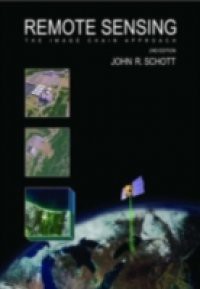Remote Sensing deals with the fundamental ideas underlying the rapidly growing field of remote sensing. John Schott explores energy-matter interaction, radiation propagation, data dissemination, and described the tools and procedures required to extract information from remotely sensed data using the image chain approach. Organizations and individuals often focus on one aspect of the remote sensing process before considering it as a whole, thus investigating unjustified effort, time, and expense to get minimal improvement. Unlike other books on the subject, Remote Sensing treats the process as a continuous flow. Schott examines the limitations obstructing the flow of information to the user, employing numerous applications of remote sensing to earth observation disciplines. For this second edition, in addition to a thorough update, there are major changes and additions, such as a much more complete treatment of spectroscopic imaging, which has matured dramatically in the last ten years, and a more rigorous treatment of image processing with an emphasis on spectral image processing algorithms. Remote Sensing is an ideal first text in remote sensing for advanced undergraduate and graduate students in the physical or engineering sciences, and will also serve as a valuable reference for practitioners.

